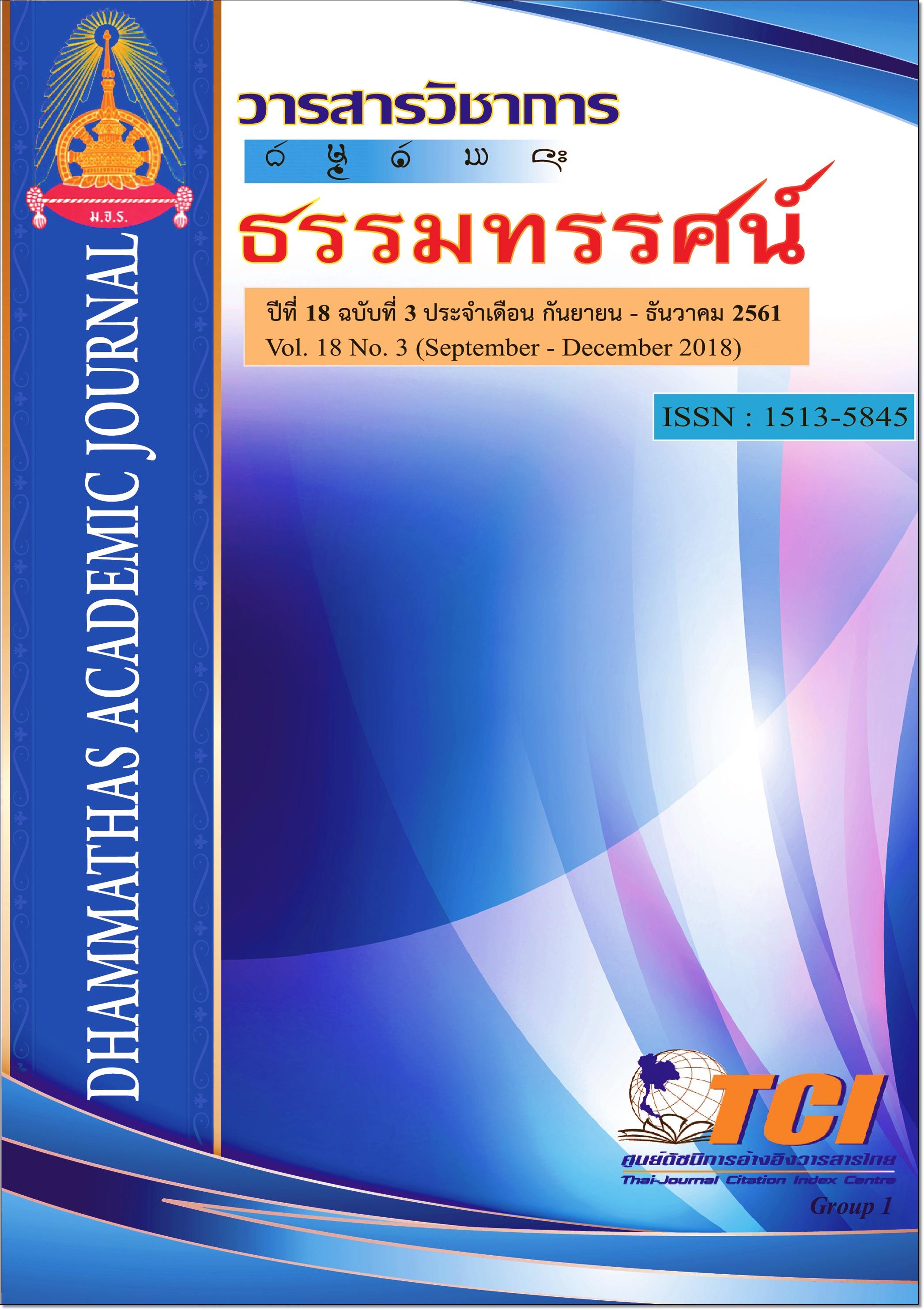The Managements of Five Aggregates (Pañca-Khandha) for Problem Solution and Human Development in Buddhism
Main Article Content
Abstract
The objective of this dissertation were to study the Five Aggregates (Pañca-khandha) in Theravāda Buddhism, the management of the Five Aggregates and life in Theravāda Buddhism and the method in managing the Five Aggregates in order to solve the problem and develop mankind in Buddhism. It was conducted based on Documentary Research Methodology, acquiring the data from Pali Canon, Pali Commentaries, outstanding works in Buddhist studies field, texts, books, and related research paper.
The result of the study was found that: The Five Aggregates in Buddhism, here, was referred to: corporeality (Rūpa), feeling or sensation (Vedanā), perception (Saññā), mental formation (Saṅkhāra), and consciousness (Viññāṇa). However, the detail of Five Aggregates was very vast and complicated; hence, in this context the study would mainly focus on the objective as mentioned above. The Five Aggregates was existed before the era of Buddhism, but it was presented as permanence or Attā-while Buddhism categorized as Anatta or impermanence. The Buddha pointed out in several places the danger of cling on the Five Aggregates. In fact, all Buddhist doctrines could be synthesized with the Five Aggregates; each aggregate was co-related depending on other in consisting the Five Aggregates as the whole; in other word, the reality of external world was nothing rather than the component of the Five Aggregates in which it was clearly identified to the mankind by mean of Phassa or contact. The Buddha present the reality of the universe with this very doctrine of the Five Aggregates and it was cling or attaching on the Five Aggregates that draw the mankind suffer with the cycle of Three Characteristics (Trilaksana). Thus, it was very important to understand the principle of the Five Aggregates at the first place in order to comprehend the Buddhadhamma. The result of the study was found that: The Five Aggregates in Buddhism, here, was referred to: corporeality (Rūpa), feeling or sensation (Vedanā), perception (Saññā), mental formation (Saṅkhāra), and consciousness (Viññāṇa). However, the detail of Five Aggregates was very vast and complicated; hence, in this context the study would mainly focus on the objective as mentioned above. The Five Aggregates was existed before the era of Buddhism, but it was presented as permanence or Attā-while Buddhism categorized as Anatta or impermanence. The Buddha pointed out in several places the danger of cling on the Five Aggregates. In fact, all Buddhist doctrines could be synthesized with the Five Aggregates; each aggregate was co-related depending on other in consisting the Five Aggregates as the whole; in other word, the reality of external world was nothing rather than the component of the Five Aggregates in which it was clearly identified to the mankind by mean of Phassa or contact. The Buddha present the reality of the universe with this very doctrine of the Five Aggregates and it was cling or attaching on the Five Aggregates that draw the mankind suffer with the cycle of Three Characteristics (Trilaksana). Thus, it was very important to understand the principle of the Five Aggregates at the first place in order to comprehend the Buddhadhamma.
The management of the Five Aggregates in Buddhism was related to the basic doctrines both in the level of worldly mundane (Lokiya) and super mundane (Lokutara) such as Three Fold Training (Tri-sikkha), Four Foundation of Mindfulness (Satipațțhāna), Four Elements (Dhātu), the Sense-Faculties (Indriya), the Twelve Spheres (Ayatana), and the Seven Factors of Enlightenment (Bojjhaṅga). For the process of practicing the principle of the Five Aggregates in daily life could be tracked from the three bodily actions (bodily, verbal, and mental). The principles of Three Fold Training, Four Foundation of Mindfulness, and the Noble Eightfold Path (Ariyamagga) were the teaching intended for developing metaphysical constituent of mankind, and developing the mankind in accordance to the four aspects of the Four Bhavana or cultivation namely bodily, molality, mental, and wisdom in order to obtain the knowledge in which it generated the theory of Buddhist integrated-practical model for developing the mankind with well concrete constructive model.
For the study of the method in managing the Five Aggregates in order to solve the problem and developing mankind in Buddhism could be divided into two levels: solving and developing the worldly mundane (Lokiya) problem such as mental culturing to be creative and generous man, be responsible and discipline, having good conduct and self-awareness; while, culturing oneself for being free from suffering and the cycle of Samsara, realizing the Nibbana or the total goal of Buddhism was for the super mundane (Lokutara) level.

